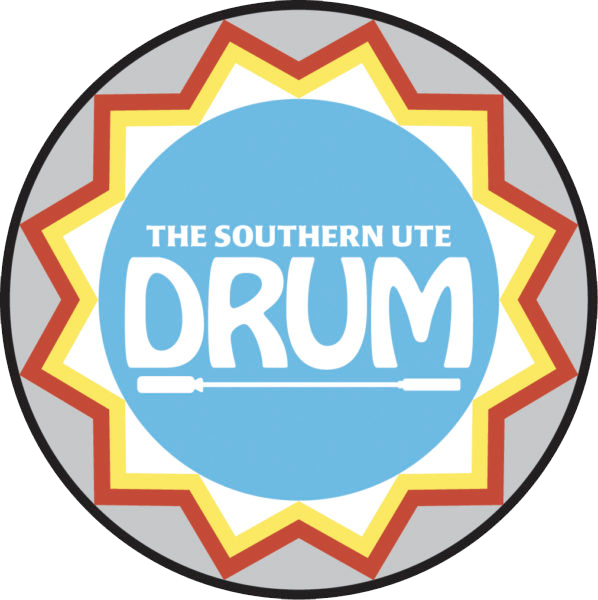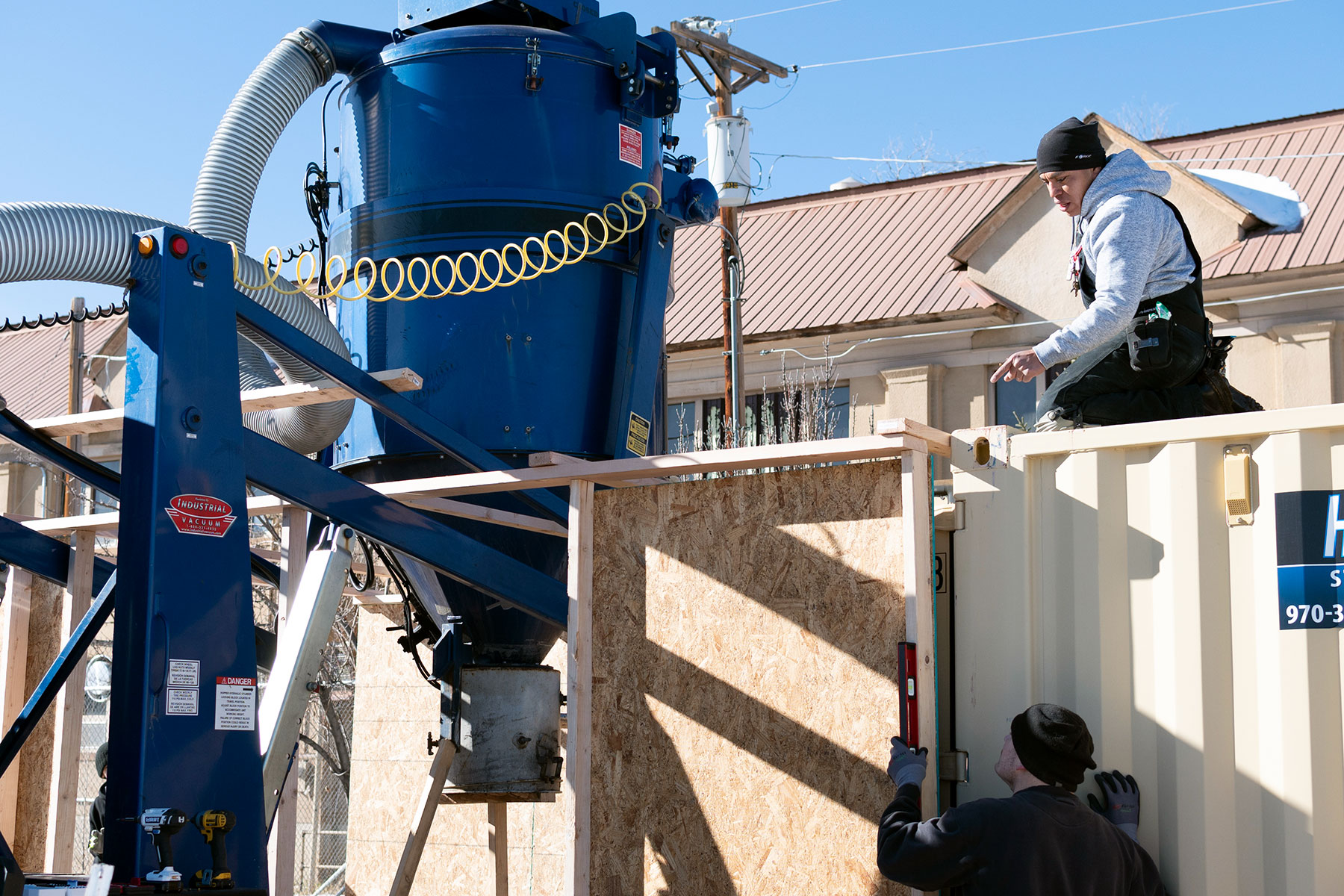The Southern Ute Indian Tribe’s Environmental Programs Division is in the final stages of a large-scale abetment and mitigation project in the former HeadStart school building on Tribal Campus. Outside contractors have now begun the process of removing regulated materials, such as asbestos and mercury, using state-of-the-art industrial equipment. The team tasked with this is Acumen Environmental Services, LLC, a certified provider of occupational safety and health service based out of Colorado Springs.
“This has been a long time and a long process for us at Environmental Programs Division,” explained Environmental Programs Division Head, Mark Hutson “We identified that the building had what are called regulated building materials; we confirmed that back in 2017. That culminated with the HeadStart program getting moved out of there, out of concern for safety.”
At that time, the Southern Ute Indian Tribe made the choice to move the former SUCAP program over to available classrooms in Southern Ute Museum. Once the HeadStart building was emptied, the structure was immediately closed to people going inside and EPD set up an exclusion fence around the perimeter.
“We’ve had to involve a lot of tribal departments in the process, including Southern Ute Culture Dept., Construction and Project Management, Tribal Planning, Properties and Facilities, Building Maintenance, Finance, and Risk Management,” Hutson said. “That building has some significant historical implications, we want to get the building safe, by removing asbestos and mercury. It was built in the 1930’s by the Bureau of Indian Affairs (BIA), during the Indian Boarding School era. [At that time] we were unaware of the ramifications that some of those materials contained. Asbestos was a wonderful insulating material, fire retardant; and it was widely used from the 1930’s up to the 1970’s as a building material.”
“We recognize now that direct and prolonged contact with asbestos can have potential adverse health effects, including breathing and respiratory problems.”
“We came to an agreement with Tribal Council to “abate and wait” to go into the building, remove as much of the regulated building materials as possible, without damaging the structural integrity of the building.”
Alexandra Ratcliff, M.S., is the Environmental Programs Manager
with EPD, she has been the boots on the ground project manager through the abatement and remediation process at the former HeadStart building.
“Well, this building with the mural has great historical value with the Tribe, and it took a long time to get this project off the ground,” Ratcliff emphasized. “Once we got approval from Tribal Council, we were in the middle of COVID, which created some challenges. We finally had a contractor selected early 2021, and initiated the project in the summer of 2021, it has been a really lengthy process — and covid really complicated the process.”
“Despite those complications, it’s been a testament to tribal departments working together, with support from the Executive Office and Tribal Council,” she emphasized. “It’s an important project for the Tribe and all departments involved.”
Environmental Programs Division has their sights on a completion date of Feb. 20.
“We set a schedule and contract with Acumen Environmental Services, who started in September of last year,” Hutson said. “Ultimately it was a Tribal Council approval due to the value of the contract. Acumen, they are now down to doing the final phase of this project — albeit the most significant phase.”
“They are on the crawlspace; they are basically using a super-giant vacuum cleaner, Hutson explained. “That is the most concerning area, back in the day they used asbestos to cover pipes for insulation. Due to time and age, a lot of that asbestos that was insulation, is now laying there on the bottom, on the soil; it needs to be removed. The thermal insulation is the most dangerous. They have guys in full Personal Protective Equipment (PPE), they are under their working — they are digging it out. And vacuuming it out with a high efficiency particulate air (HEPA) filter. Once it is pulled in, it is not going to go into the atmosphere.”
“This project has got multiple funding facets to it. The initial up-front funding came from the Tribe’s Clean Air Act penalty funds; monies that the Tribe received from companies that caused potential environmental harm, [those funds] are now used to do environmental good,” explained Hutson. “The second part of that is that once this project is done, the Tribe, through the Risk Management Dept. will be seeking to get some kind of reimbursement from the Tribe’s insurance company.”
Oil & Gas Operators on the reservation have to operate by specific clean air regulations, if not in compliance, the Tribe’s inspectors issue an enforcement, or civil penalty. Paid to the Tribe, those funds are then set aside for environmental related projects; The Clean Air Act penalty funds are managed through EPD. These funds are being used for the abatement of the historic Head Start building and hence the preservation of the murals.
The Tribe’s Environmental Programs Division continued to work with May/Burch Conservation in September of 2020 to assist in the documentation and preservation of historic murals from the boarding school era, these Native American scenes date back to the early 1930’s located in currently vacant buildings throughout Tribal Campus. Funding for that work was also allocated to the protection of the artwork, ahead of the abatement process. Western Specialty Contractors out of Denver, Colo., were hired to cover and protect the large mural located in the HeadStart Gymnasium in collaboration with May/Burch Conservation.
“The mural is in there; it’s been well documented through photogrammetry. It is preserved in there right now. We built a structure to protect it from dust, dirt and humidity, working with May/Burch Conservation to preserve it the best we can ‘In situ,’” Hutson said.
“Once we are done with that building, it’s going to be up to the Tribe to decide whether to rehabilitate and repurpose, or demolish,” Hutson said.
“The building really looks good, it’s back to its original state with the hardwood floors and looks totally different than it was six months ago,” Ratcliff remarked. “The next biggest step now is just [deciding] what’s next for this building. Once the materials are removed, everyone can safely enter the building and assess it firsthand, and not have to worry about all the environmental hazards.”
Contact Alexandra Ratcliff for more information, or to answer questions via email, aratcliff@southernute-nsn.gov or by phone, 970-563-2256.

